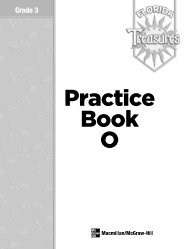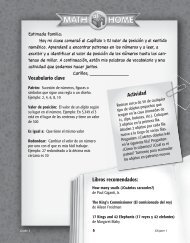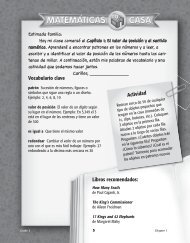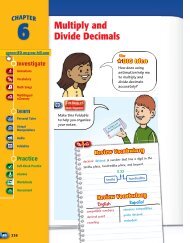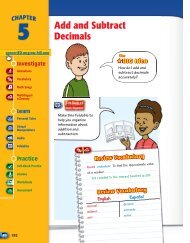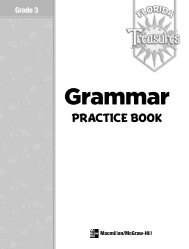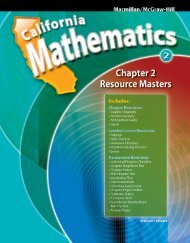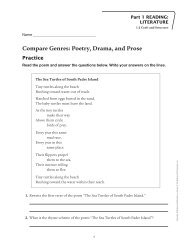Practice - Macmillan/McGraw-Hill
Practice - Macmillan/McGraw-Hill
Practice - Macmillan/McGraw-Hill
You also want an ePaper? Increase the reach of your titles
YUMPU automatically turns print PDFs into web optimized ePapers that Google loves.
Name<br />
Authors don’t always tell readers everything in a story, so you may<br />
have to draw your own conclusions. To draw conclusions, you<br />
rely on what you know from your own experience and combine it<br />
with clues from the story. Drawing conclusions as you read can<br />
help you better understand the story.<br />
Read the two paragraphs below, then answer the questions.<br />
Describe the clues that helped you draw a conclusion.<br />
It was almost noon. Maria had been watching the clock for the last half<br />
hour. Wouldn’t Mrs. Jones ever stop talking? Maria thought again of the<br />
green apple in her lunchbox. She could almost taste it. Then her stomach<br />
began to growl.<br />
What conclusion can you draw about Maria?<br />
Story clues:<br />
Experience clues:<br />
Comprehension:<br />
Draw Conclusions<br />
Evan picked at his cereal. He knew he should have studied harder last<br />
night, but the dates all ran together in his head. Why did he have to learn<br />
American history anyway? For the third time, his mother told him to hurry.<br />
He put on his coat. He felt a sudden wave of dread.<br />
What conclusion can you draw about Evan?<br />
Story clues:<br />
Experience clues:<br />
104<br />
Zathura • Grade 5/Unit 3<br />
<strong>Practice</strong><br />
At Home: Write a short story with a beginning and middle,<br />
but no end. Then ask another person to read your story and<br />
draw conclusions about how the story could end.<br />
© <strong>Macmillan</strong>/<strong>McGraw</strong>-<strong>Hill</strong>



